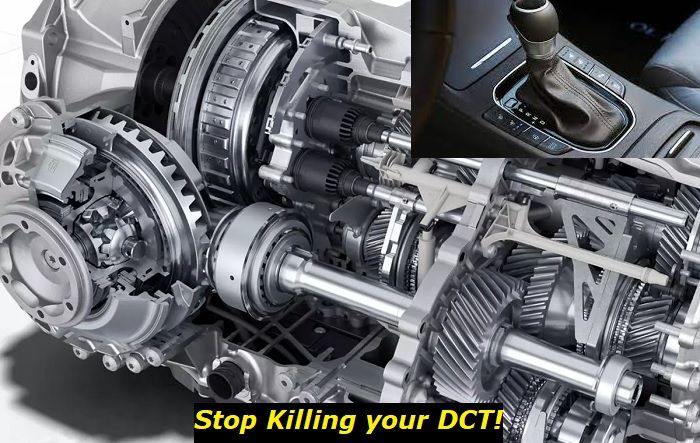The BMW S63 is the high-performance version of the N63 made by the BMW M subsidiary of BMW AG. It was introduced in 2009 and is still in use by the German automaker up to the present, albeit having some technical updates over the years to address some issues and bring about better performance.
Being a product bearing the logo of BMW, a German brand with over a hundred years of history, people expected nothing less in the S63. Thus, the engine has seen a wide application in many of the automaker's famous high-performance ranges such as the X5 M, X6 M, and M5. The reputation that preceded it was coupled with positive reviews from users and automotive publications. However, it was not without its share of problems over the years.
.jpg)
Key facts and my opinion about the engine
- Production years: 2008-now
- Average lifespan of S63: 120,000-130,000 miles
- Fuel supply type: direct injection
- Power range: 530-600 hp
- Fuel efficiency: bad
- Engine block material: aluminum
- Engine reliability score: low
- The most common problems: oil consumption, head bolts thread problems, turbocharger lubrication issues, VANOS problems, Valvetronic issues.
Common Symptoms of Problems in the BMW S63 Engine
Upon investigation using owners' feedback, accounts of mechanics familiar with the engine, and reports from automotive publications, we found out that the most common issues in the BMW S63 are the following:
1. Rough Idling
When the vehicle's motor is on but not in motion, you may feel that the engine is either struggling or choking from power fluctuations.
2. Engine Stuttering
While driving your car, you may feel like it's starving for power making it noticeably shaky. It may be coupled with an unusual noise coming from your engine bay.
3. Fault Codes
This starts with a "Check Engine" light warning on your dash. Then, upon inspection using a scanning tool ported via the OBD system, it may display fault codes associated with the internal components of the engine.
4. Limp Mode
Limp mode occurs as a result of the detection of problems in the engine. It forces the engine to shut down its functions and power. This is a safeguard placed by automakers to prevent further damage to the crucial parts of your car when it detects serious problems.
5. Power Loss
This can manifest together with a combination of one or more of the symptoms in this list. It will feel like your vehicle is experiencing a shortage of power even if your foot is pressing hard on the accelerator.
6. Copper Shavings in Engine Oil
This problem can be hard to detect in its infancy. But when you see these metallic shavings in your dipstick as you check your oil level, consider it a major cause of concern.
7. Knocking Engine
These hearing strange knocking noises from your engine bay are commonly coupled with a very noticeable change in your car's performance.
8. Misfires
Misfires happen when you are either starting your engine or idling. This means your engine is not delivering its intended combustion, which causes one or more cylinders to remain unfired. Again, this comes with a major performance lag or even power loss.
According to mechanics who are familiar with BMW engines, most of these issues can be attributed to the regular wear and tear of the engine as it accumulates higher mileage. Some of these are likely to manifest at the 100,000-mile mark where your car's standard maintenance schedule falls. Neglect or abuse from users cannot be dismissed as the primary contributors as well because these can definitely hasten the deterioration of the engine's interior components.
Common Causes of Problems in the BMW S63 Engine and How to Fix Them
Our best advice is to take your car to a mechanic for further diagnosis as soon as the symptoms shown in the previous section start to manifest. However, if you are looking to do things yourself or you just want a better understanding of what needs to be done in order to solve the problems associated with them, this part can help you out.
1. VANOS Solenoid Fault
Vanos is BMW's version of the variable valve timing (VVT) technology. A worn Vanos solenoid can trigger a lot of problems, including rough idling, misfires, performance lags, limp mode, and fault codes.
Sometimes it's only due to the Vanos solenoid accumulating dirt so a simple cleaning using these steps can fix the problem:
- Prepare the engine. Warm it up to operating temperature and then turn it off.
- Remove the Vanos solenoid bolts. The bolts are located on the back of the cylinder head, near the firewall.
- Clean the bolts and their threads with a wire brush.
- Remove any debris from the housing and clean it with brake cleaner. Do not use compressed air, as this can damage the solenoid.
- Reinstall the bolts and torque them accordingly. Make sure they are tight enough so they don't come loose but don't over-tighten them or strip the threads.
If the solenoid is already worn, it may be a good idea to have it replaced right away. To do this, just repeat the steps provided above on how to remove the old solenoid unit. After installing the new one, make sure it is bolted properly using the recommended torque.
2. Premature Wear of Rod Bearing
A high amount of copper deposits in your oil reservoir signals the premature wear of rod bearings in your BMW S63 engine. Knocking noises in your engine can also be a red flag that points out this specific problem.
Here is a step-by-step guide for you to replace your S63 engine's damaged rod bearing:
- Park your car on a level surface and activate the emergency brake.
- Open the hood and disconnect the negative battery cable.
- Remove the intake manifold bolts, then remove the manifold and its gaskets.
- Detach the oil return line from the block and remove the line from the clip.
- Disconnect the oil supply line from the block and remove the line from the clip.
- Remove the bolts that hold the timing chain cover in place, then remove the cover.
- Rotate the engine so that the number 1 cylinder is at Top Dead Center (TDC) on its compression stroke, then remove the bolts that hold the cylinder head in place.
- Lift the head off of the engine block and set it aside.
- Clean off any gasket material from both surfaces of the head gasket mating area on the block, then install a new head gasket (make sure to use sealant).
- Install a new rod bearing into position on the number 1 rod journal, making sure to install it with its marked side facing up.
- Apply a thin coat of engine oil to the surface of the new bearing, then install the cylinder head onto the block.
- Torque the cylinder head bolts within the recommended specifications.
- Install the timing chain cover and torque its bolts to the recommended setting.
- Reattach the oil return and supply lines to the block and secure them with their respective clips.
- Install a new intake manifold gasket set, then install and torque down the intake manifold bolts within the advised torque.
- Reconnect the negative battery cable and close the hood.
3. Dirty or Worn Spark Plug and Ignition Coil
Frequently pushing your BMW S63 engine to its limit on the road can cause the spark plug and ignition coil to wear down easily. Even with proper care, the spark plugs of the engine normally have to be changed between 25,000 and 40,000 miles while the ignition coil typically lasts twice longer as them.
If your spark plugs and ignition coils are dirty or worn they may result in power drops, rough idling, misfires, and all sorts of problems to your engine. So, here are ways to go about this issue:
- Park your car on a safe and even ground, and then, turn off its engine.
- Open the hood of your car and locate the problematic spark plug and ignition coil.
- Remove the faulty spark plug by unscrewing it with a socket wrench. Some spark plugs may be harder to reach though, so you will have to disconnect some hoses, wires, or parts that may prevent you from accessing them. Be careful not to drop any of them on the ground.
- Inspect the spark plug and ignition coil for dirt, carbon deposits, or other types of gunk. If they are dirty, you can clean them by using a wire brush or a piece of clean cloth. Do the same for the ignition coil.
- Reinstall the spark plugs and ignition coil by screwing them back in place. Be sure that they are torqued within the specified level so that they don't come loose.
- If they appear damaged in any way, be sure to change them right away.
4. Oil Sealant and Gasket Leaks
The most obvious signs of oil leaks can manifest in the sudden change of smoke color or quality coming from your exhaust. It can also cause your engine to overheat and lose power. The friction coming from the insufficient or depleted oil in your engine can produce different kinds of noises, too. Another sign of leaks is the development of milky gunk in your oil cap, radiator cap, or places where there shouldn't be any.
A lot of problems encountered in the BMW S63 trace back to these problems. So, here is a step-by-step guide for you to replace the oil seal and gasket of your engine if any of them are already damaged.
- Park your car on a level surface and shut off the engine.
- Open the hood and remove the oil filler cap from the engine.
- Place a drain pan under the engine and remove the drain plug from the oil pan.
- Allow the oil to drain completely into the pan and then replace the drain plug.
- Reinstall the oil filler cap.
- Locate the oil seal and gasket at the front of the engine.
- Remove the old seal and gasket and replace them with new ones.
- Reinstall the cover at the front of the engine.
- Start up your engine and check for any other signs of leaks.
Conclusion
As seen here, the BMW S63 is indeed a very reliable engine. Most of the issues that crop up along its way are only caused by its regular wear and tear. In some extraordinary instances, they may be due to irresponsible use and mods. There's no doubt that this is one of the best engines made by the German automaker as claimed by BMW owners, mechanics familiar with the engine, and automotive analysts.
About the authors
The CarAraC research team is composed of seasoned auto mechanics and automotive industry professionals, including individuals with advanced degrees and certifications in their field. Our team members boast prestigious credentials, reflecting their extensive knowledge and skills. These qualifications include: IMI: Institute of the Motor Industry, ASE-Certified Master Automobile Technicians; Coventry University, Graduate of MA in Automotive Journalism; Politecnico di Torino, Italy, MS Automotive Engineering; Ss. Cyril and Methodius University in Skopje, Mechanical University in Skopje; TOC Automotive College; DHA Suffa University, Department of Mechanical Engineering






Add comment